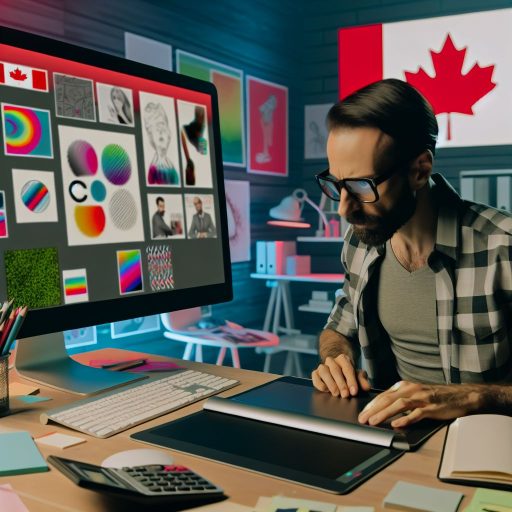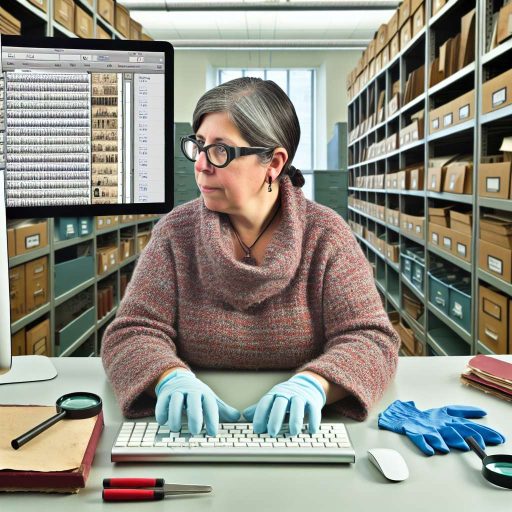Balancing Creativity with Client Expectations
Identifying Client Needs
Understanding client needs is crucial at the outset of a project.
Begin by asking open-ended questions for clarity.
This encourages clients to express their vision.
Active listening fosters mutual understanding.
Summarize their points to confirm comprehension.
Setting Clear Boundaries
Establishing clear boundaries is essential for a successful collaboration.
Define project scope and deadlines early on.
A detailed contract helps mitigate misunderstandings.
Discuss revision limits to avoid endless edits.
Clearly lay out payment terms and conditions.
Effective Communication
Regular communication builds trust between designers and clients.
Provide updates to keep clients informed of progress.
Use visual aids to explain concepts and designs.
Encourage feedback to refine design directions.
Address concerns promptly to maintain a positive relationship.
Maintaining Creativity Under Constraints
Creative professionals often face constraints from clients.
Use limitations as a springboard for innovative ideas.
Brainstorm multiple solutions to meet specific client requests.
Collaborate with the client to expand their vision.
Stay open to tweaking designs as needed.
Fostering Client Trust
Building trust can significantly enhance the design process.
Be transparent about your creative process and decisions.
Share relevant past work to establish credibility.
Invite client participation throughout the design journey.
This cultivates a sense of ownership and accountability.
Unlock Your Career Potential
Visualize a clear path to success with our tailored Career Consulting service. Personalized insights in just 1-3 days.
Get StartedManaging Time Effectively
Prioritize Your Tasks
Start by listing all tasks you need to complete.
Determine which tasks have imminent deadlines.
Focus on high-impact projects first for better results.
Use a system to categorize tasks by urgency and importance.
Set Clear Goals
Define specific goals for each design project.
Ensure your goals are measurable and achievable.
Break larger projects into smaller, manageable steps.
This clarity helps maintain focus and momentum.
Use Time Management Tools
Leverage tools like Trello or Asana for organization.
Set timers to track work intervals and breaks.
Regular reviews of progress can enhance accountability.
Utilize calendars to visualize deadlines and milestones.
Minimize Distractions
Create a dedicated workspace to enhance concentration.
Limit notifications from apps and social media.
Establish ‘do not disturb’ periods for deep work.
Consider using noise-canceling headphones if necessary.
Practice Efficient Communication
Establish clear lines of communication with clients.
Schedule regular check-ins to clarify expectations.
Utilize concise emails to save time on back-and-forth.
Encourage feedback to ensure you stay on the right track.
Review and Reflect
After each project, take time to review your process.
Identify what worked well and areas for improvement.
Make adjustments for future projects based on these insights.
This practice fosters continuous improvement and efficiency.
Staying Updated with Design Trends
Importance of Continuous Learning
Graphic design is an ever-evolving field.
Staying updated with industry trends is crucial for success.
Embracing continuous learning boosts creativity and innovation.
It also enhances skills and keeps designers relevant.
Online Courses and Webinars
Taking online courses offers structured learning opportunities.
Web platforms like Skillshare and Coursera provide extensive courses.
These platforms feature tutorials on various design topics.
Furthermore, webinars from industry experts offer real-time insights.
Design Communities and Forums
Joining design communities fosters networking and collaboration.
Websites like Behance and Dribbble showcase creative work.
Design forums provide spaces for discussion and feedback.
Engaging with peers can inspire new ideas and techniques.
Follow Influential Designers and Brands
Social media offers a way to follow design influencers.
Platforms like Instagram and Twitter feature design trends.
Additionally, following renowned design brands can be beneficial.
They often share valuable tips and emerging trends.
Subscribe to Design Magazines and Blogs
Staying informed through design publications is essential.
Magazines like Communication Arts and Wired offer deep insights.
Blogs can also provide updates on design techniques and trends.
Regularly reading industry publications enhances knowledge.
Attend Conferences and Workshops
Participating in design conferences encourages professional growth.
Events like AIGA Design Conference provide networking opportunities.
Workshops enable hands-on learning with industry leaders.
Attending these events keeps designers motivated and informed.
Delve into the Subject: How to Stay Inspired as a Canadian Content Creator
Handling Criticism
Understanding Constructive Feedback
Constructive feedback serves as a tool for improvement.
It aims to provide specific suggestions for betterment.
For instance, receiving comments on color choices can guide future designs.
Embracing this feedback can enhance skills and creativity.
Moreover, constructive feedback fosters a positive working relationship.
Recognizing Destructive Criticism
Destructive criticism often diminishes morale.
It focuses on personal attacks rather than offering solutions.
For example, saying “this design is terrible” is unhelpful.
Such comments can be demotivating and counterproductive.
It’s crucial to differentiate between constructive and destructive feedback.
Strategies for Managing Criticism
Developing resilience is essential in handling criticism.
First, maintain a mindset open to learning.
Next, seek clarification on feedback to understand intentions.
Additionally, allow yourself some time to process the comments.
Lastly, focus on the aspects of your work that are praiseworthy.
Engaging in Dialogue
When receiving feedback, engage in dialogue with the critic.
This can clarify misunderstandings and reveal valuable insights.
For example, ask for specific examples of what can be improved.
An open conversation promotes growth and reduces defensiveness.
Ultimately, it can lead to better designs and stronger connections.
Creating a Supportive Environment
Fostering a supportive atmosphere encourages constructive dialogue.
Recognize and appreciate the contributions of your peers.
Consider hosting feedback sessions to create a safe space for sharing.
Promote a culture where all critiques aim for growth, not criticism.
This cultivates a nurturing environment for everyone involved.
Discover More: Challenges and Rewards of Being an Archivist in Canada
Collaboration Challenges: Fostering Effective Communication with Teams
The Importance of Clear Communication
Effective communication is vital in graphic design projects.
It minimizes misunderstandings between team members.
Moreover, clear communication promotes collaborative success.
Frequent Feedback Loops
Regular feedback is essential for aligning team objectives.
Frequent check-ins facilitate project progress tracking.
Team members feel more involved through ongoing feedback.
Using Collaborative Tools
Leverage technology to enhance communication among designers.
Tools like Slack or Trello streamline project updates.
These platforms foster quick, efficient exchanges of ideas.
Establishing Defined Roles
Clearly defined roles help in reducing task overlaps.
Everyone knows their responsibilities and expectations.
This structure promotes accountability and project ownership.
Encouraging Open Dialogue
Encourage team members to voice their thoughts openly.
Creating a safe space fosters innovation and creativity.
Furthermore, this environment nurtures trust among collaborators.
Regular Team Meetings
Weekly team meetings can enhance information sharing.
These gatherings create opportunities for brainstorming.
Active participation enriches team dynamics and project outcomes.
Resolving Conflicts Promptly
Address conflicts quickly to maintain team harmony.
Open discussions lead to effective conflict resolution.
Resolving issues promptly preserves the overall project timeline.
Building Strong Relationships
Strong interpersonal relationships enhance team synergy.
Invest time in team-building activities to strengthen bonds.
Relationships built on trust significantly improve collaboration.
You Might Also Like: The Path to Becoming a Certified Archivist in Canada

Technical Skill Gaps
Identifying Areas for Improvement
Many graphic designers encounter skill gaps as they progress in their careers.
Identifying these areas can enhance their employability.
One common issue is a lack of proficiency in specific design software.
For instance, mastering Adobe Illustrator is essential for vector design.
Additionally, understanding user experience (UX) principles is vital.
These skills improve the overall effectiveness of designers’ work.
To pinpoint deficiencies, designers should self-assess regularly.
Seeking feedback from peers can provide further insights.
Participating in design critiques fosters a culture of improvement.
As such, learning from others can fill knowledge gaps.
Utilizing Learning Resources
Once designers identify specific areas for improvement, various resources are available.
Online platforms like Coursera and Skillshare offer structured courses.
These platforms often include expert-led tutorials and peer support.
Books and e-books authored by industry leaders provide valuable knowledge.
Networking with other designers can also open up learning opportunities.
Attending workshops or conferences allows for hands-on experiences.
Furthermore, following design blogs keeps professionals updated.
These blogs often feature the latest trends and techniques.
Lastly, joining social media groups can facilitate knowledge exchange.
These groups foster a sense of community among designers.
Uncover the Details: The Role of Authenticity in Canadian Digital Content Creation
Dealing with Creative Blocks
Recognizing Creative Blocks
Every graphic designer faces creative blocks at some point.
These challenges can hinder productivity and creativity.
Recognizing the signs of a creative block is essential.
Feelings of frustration or being uninspired may indicate a block.
Awareness is the first step to overcoming these obstacles.
Techniques to Overcome Creative Blocks
Finding inspiration can come from various sources.
Start by taking a break from your current projects.
A short walk outside can clear your mind.
Sometimes a change of scenery sparks new ideas.
Engaging with the Creative Community
Connect with other designers for fresh perspectives.
Join local design meetups or online forums to share ideas.
Collaborating with peers can inspire innovative concepts.
Feedback from fellow creators often leads to breakthroughs.
Exploring New Mediums and Techniques
Experimenting with different materials can ignite creativity.
Consider trying digital tools if you typically work traditionally.
Explore new software or even attend workshops to learn.
These experiences can refresh your creative process.
Establishing a Routine
Creating a consistent routine can combat creative blocks.
Scheduling dedicated time for design work helps foster creativity.
Include time for brainstorming and free sketching each week.
Establishing a routine provides structure and focus.
Setting Realistic Goals
Avoid overwhelming yourself with unrealistic expectations.
Break down large projects into smaller, manageable tasks.
Celebrate small achievements to build momentum.
Realistic goals reduce stress and enhance creativity.
Using Mindfulness Techniques
Incorporate mindfulness practices into your daily routine.
Meditation can help clear mental clutter and foster creativity.
Breathing exercises enable you to refocus during frustrating moments.
Mindfulness promotes awareness, improving your design process.
Navigating the Business Side of Design: Understanding Contracts and Invoicing
The Importance of Contracts
Contracts protect you and your work as a graphic designer.
They clarify expectations between you and your clients.
Moreover, contracts help prevent misunderstandings and conflicts.
Always include specific terms regarding deliverables and deadlines.
Additionally, outline payment terms to avoid financial disputes.
Essential Contract Components
Begin with a clear project scope to define what will be delivered.
Include timelines to establish when each phase is due.
Payments should be detailed, specifying amounts and due dates.
Moreover, include clauses on intellectual property rights.
These clauses state who owns the designs after completion.
Invoicing Best Practices
Invoicing is crucial for getting paid in a timely manner.
Use professional invoicing software to create accurate invoices.
Clearly itemize services and associated costs on each invoice.
Furthermore, include payment methods and deadlines for convenience.
Handling Late Payments
Late payments can disrupt your business cash flow.
Establish a late fee policy to encourage timely payment.
Communicate directly with clients if payments are overdue.
A friendly reminder often resolves minor issues efficiently.
In some cases, consider offering discounts for early payments.
Building Long-term Client Relationships
Strong client relationships can lead to repeat business.
Transparency in contracts and invoicing fosters trust.
Always seek feedback after a project completion.
This not only improves your service but also strengthens ties.
Consider maintaining regular communication even after projects end.
Additional Resources
TIP 59: Improving Cultural Competence




